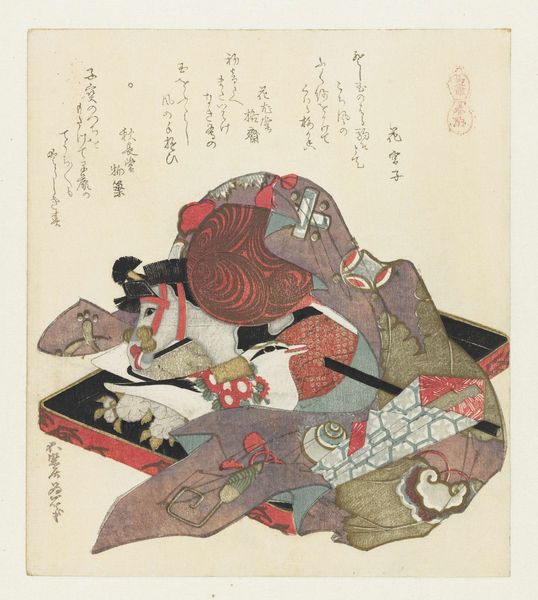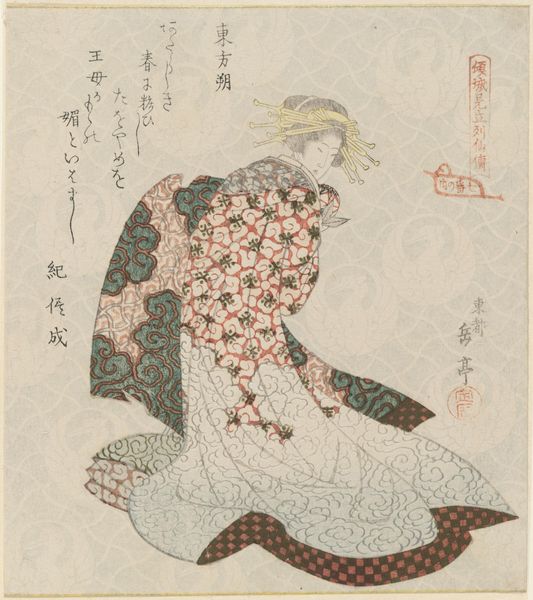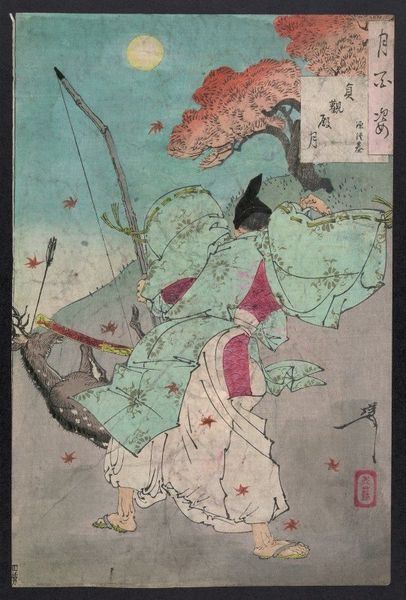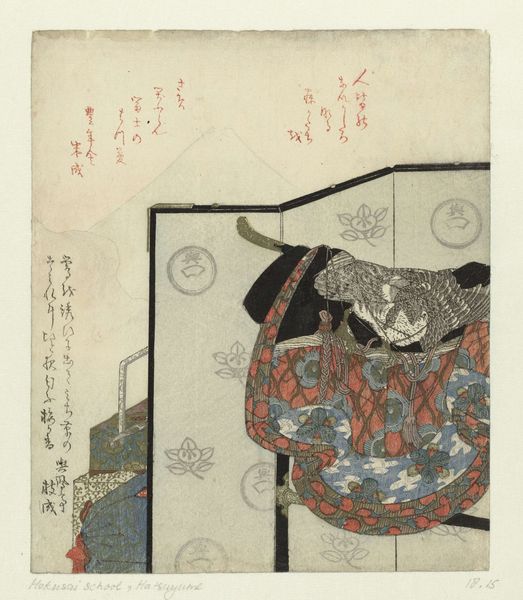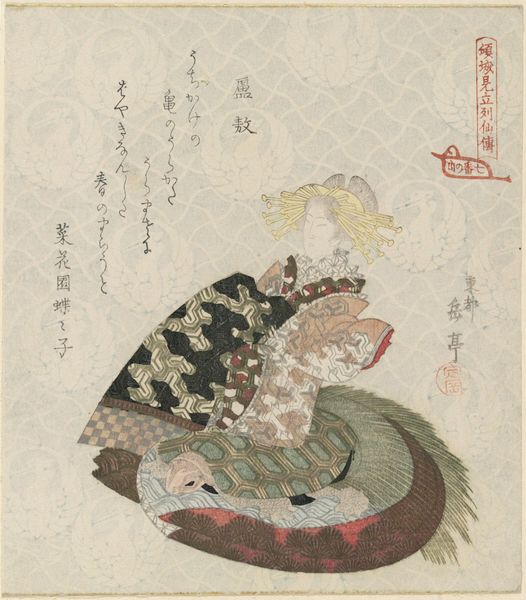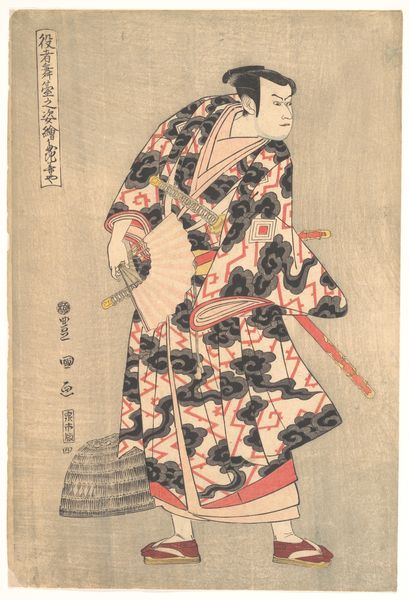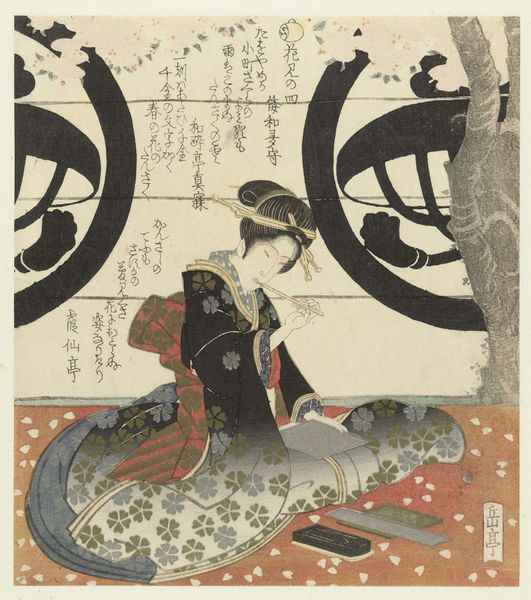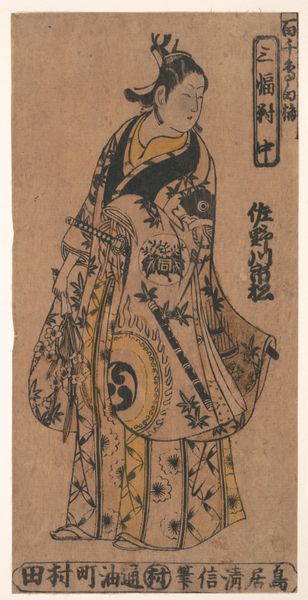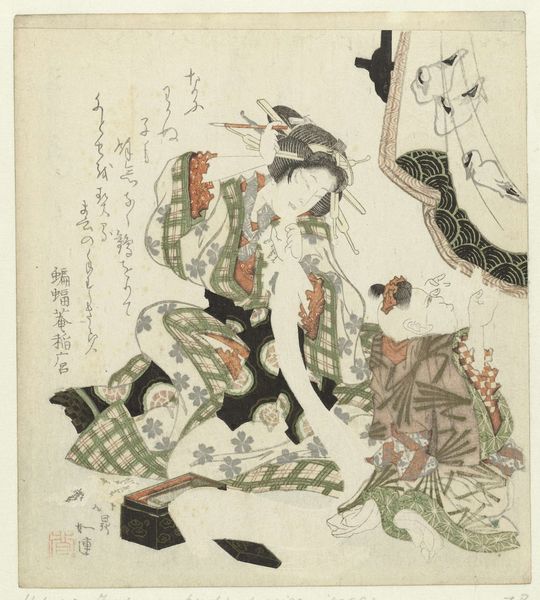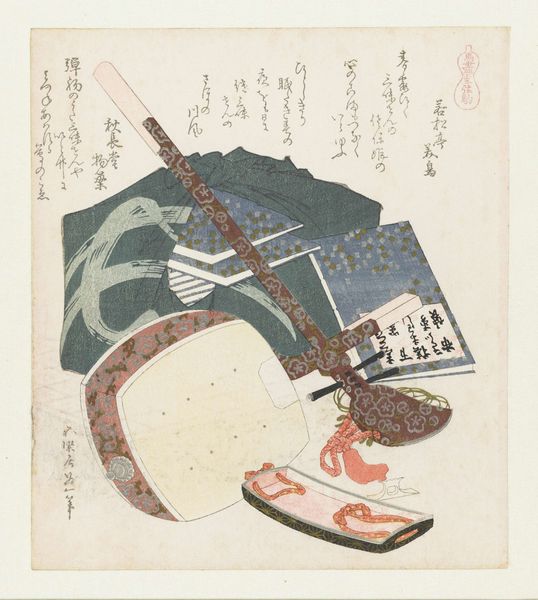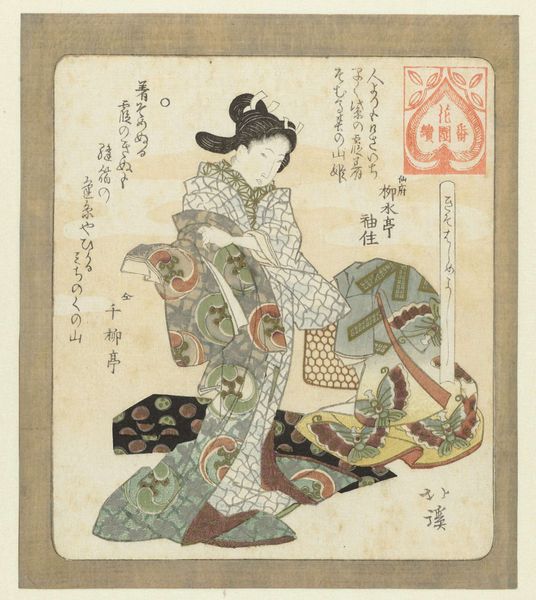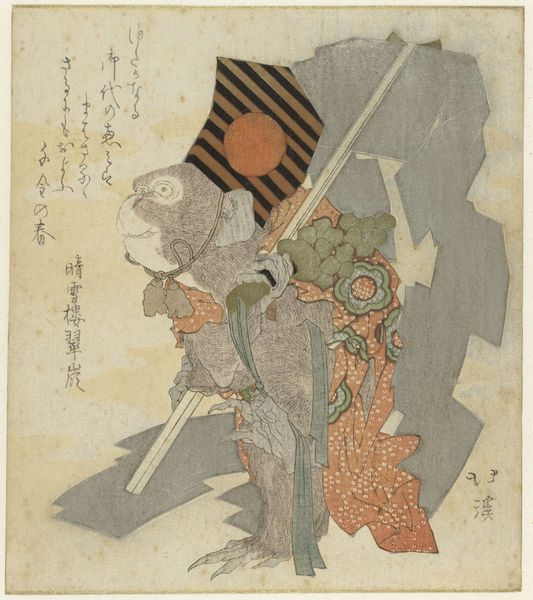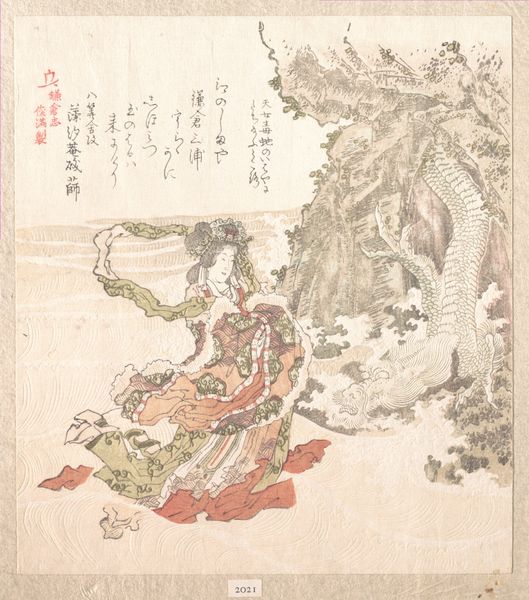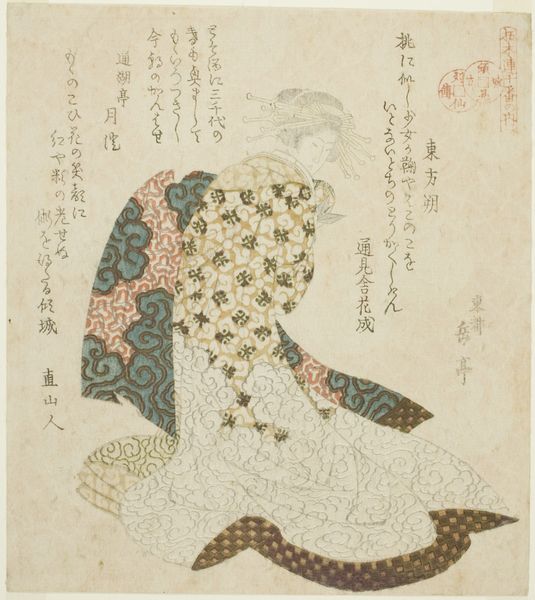
print, watercolor
#
portrait
# print
#
asian-art
#
ukiyo-e
#
watercolor
#
watercolour illustration
#
watercolor
Dimensions: height 206 mm, width 183 mm
Copyright: Rijks Museum: Open Domain
Curator: This work, housed here at the Rijksmuseum, is called "The Immortal (Sennin) Ôkyô" created by Yashima Gakutei around 1821 or 1822. It's a watercolour print that falls into the ukiyo-e tradition, a vibrant portrayal blending portraiture and narrative. Editor: Ooh, my first impression? Melancholy, definitely. There's something about the figure's posture, peeking through that geometric frame, like she's trapped, or maybe just observing from a distance with wistful curiosity. Curator: That feeling of enclosure resonates with the era's complex social structures, especially concerning women. The subject is looking beyond some kind of framing element, evoking ideas about forbidden views and limited perspectives. The floating sennin of Japanese myth also calls into question established ideas of race, gender and even identity as fluid. Editor: Absolutely! I also love how Gakutei uses watercolor to soften the image, making her appear almost ethereal against the delicate backdrop pattern that looks like clouds or stylized waves, contributing to the dream-like atmosphere, a gentle world. The texture of the paper almost feels like I am holding my grandma’s old Japanese tapestry. Curator: The cranes on the kimono hold significant cultural weight. They were understood as symbols of longevity and good fortune. Here, in combination with her immortality as a Sennin, perhaps speaks to enduring legacies that were accessible to those who lived an ascetic, pure lifestyle. Editor: And it is accessible via water color print, bringing that legacy into the life of the common consumer. Do you think it also speaks of resilience against the backdrop of fleeting beauty. Life and loss captured in water-colour paper. Curator: That's an intriguing angle. I hadn’t thought of the artwork quite that way, although I do think that these themes were circulating culturally at the time, due to sociopolitical tensions. We also can not forget Gakutei himself—the ukiyo-e artist was known for his subversive personality, often using art as an active form of resistance. Editor: A reminder that art whispers secrets beyond what's immediately visible, it opens my own way of interpreting the image! Thanks for unraveling layers of stories woven in "The Immortal".
Comments
No comments
Be the first to comment and join the conversation on the ultimate creative platform.
